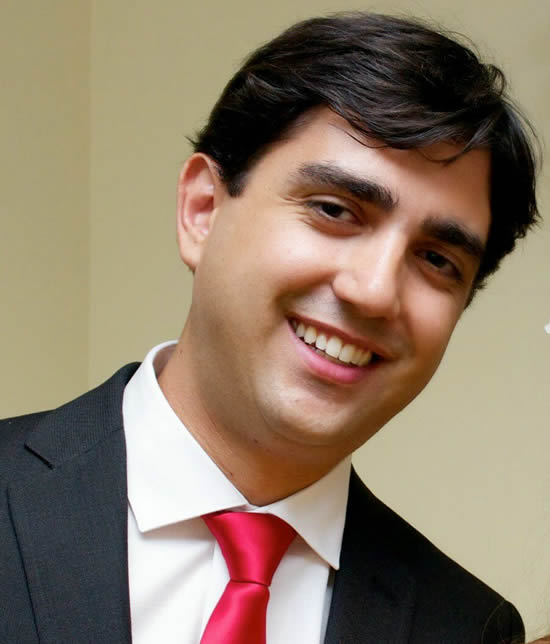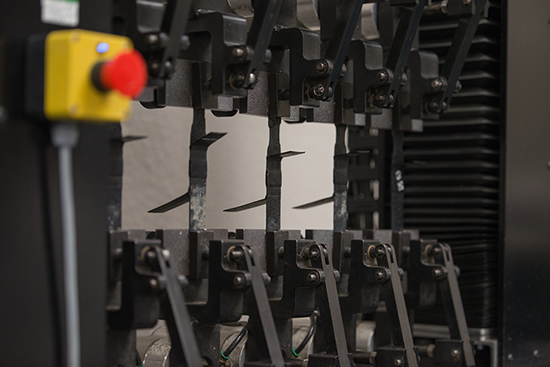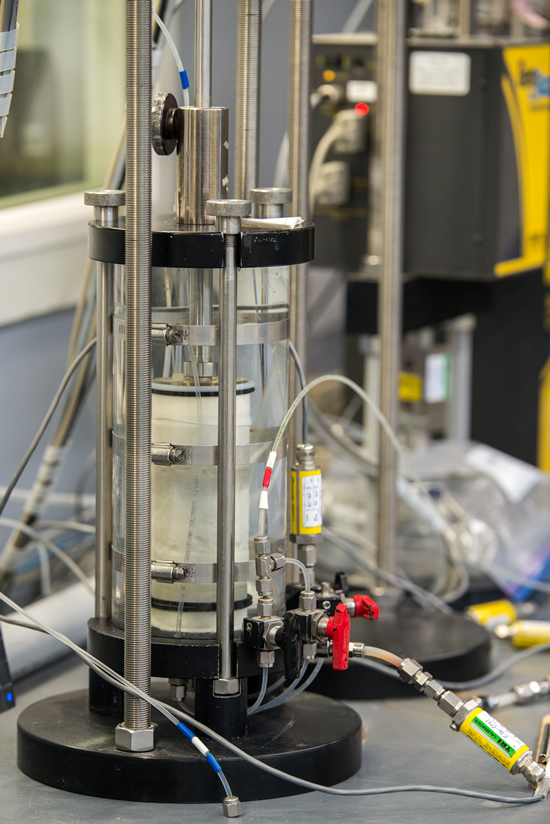


Geosynthetica Latin America’s editor Natalia Rodado caught up with Dr. Julio Ferreira (TRI Ambiental, Brazil) during GeosPeru 2017. In the interview that followed, they discussed the growth of geosynthetics in South America, some of the things that connect and differentiate the practice in North and South America, and the field’s future.
Natalia’s article follows, with translation and additional detail added by Geosynthetica editor Chris Kelsey.
JULIO FERREIRA: PERSPECTIVE ACROSS CONTINENTS
Dr. Julio Ferreira serves as the Director of Brazil-based geosynthetics testing and education provider TRI Ambiental. The company is connected to TRI Environmental, which has its international headquarters in Austin, Texas. Dr. Ferreira’s studies and professional life have given him roles in South and North America. He obtained his undergraduate and master’s degrees at the University of Sao Paulo and a doctorate in engineering at the University of Texas in Austin. He also worked in Texas for TRI Environmental before relocating to head up Latin American operations for the company via TRI Ambiental.
Studying and working on both continents has given Julio Ferreira unique perspective on the differences and similarities between how geosynthetics are pursued throughout the Americas. Although projects usually want to reach the same goals, he notes, the ways in which people approach them and the ways in which rules govern the execution projects varies considerably between countries.
WHAT CONNECTS GEOSYNTHETICS
Regarding the similarities shared by North American and South American geosynthetics professionals, Dr. Ferreira, from his perspective in the Brazilian market, thinks that one of the main similarities is found in the manufacturing of geosynthetics. In general, he says, manufacturers share the same concerns regarding material quality and production introduction. Also, for a project perspective, much of the field methodologies for handling and installation are the same between the Americas, because manufacturers have mostly agreed upon those issues and it has enable a basic knowledge of material properties to be known.
Additionally, when looking at specific cases, such as between the United States and Brazil, the experience with the geosynthetics in the South American country has been strongly influenced by the North American country; thus, they have many similar practices, in general. It is important to note, though, that Brazil has also been strongly influenced by geosynthetics in Europe.
DIFFERENT APPROACHES
As for the differences between a South American country like Brazil and the United States, the US community’s approach to knowledge has formed more independently, Julio Ferreira says. This is mainly due to the fact that very large projects have been carried out in the United States and that the knowledge of geosynthetics is more widespread, since the materials have been incorporated into the domestic infrastructure for a longer period of time.
This has given the United States a base of knowledge in project success and challenges, as well as regulatory support, such as the long-held requirement to utilize geosynthetics in waste management cell lining and capping applications.
No similar methodology for widely dispensing geosynthetics information has yet been developed in Brazil, though. Some general government policies have been created for geosynthetics in landfills, but they do not have the necessary technical content yet to be on par with the beneficial impact provided by the US EPA regulations.
This epitomizes the difference in how working with geosynthetics varies between these countries, and which is largely representative of the larger differences between the practice in North and South America. So, while the quality control in manufacturing may be the same between North and South American production sites, implementation in the field may be very different.
CURRENT DEVELOPMENTS IN SOUTH AMERICA
Dr. Julio Ferreira notes that one sector worth watching in South America is mining, where geosynthetics continue to gain market presence. Geosynthetics add value to mining developments, providing increased yield and decreased environmental risk. These are short- and long-term benefits to mining projects.
Another endeavor Dr. Ferreira is paying close attention to is the divergence of the São Francisco River, the longest river located entirely within Brazil. The country has planned to divert water from this important system into semi-arid regions of the country where drought persists. The work has required the use of a significant amount of geomembranes to improve water containment and flow.
Looking larger at South America, Julio Ferreira sees the geosynthetics industry developing well in Peru and Chile. The development of these countries in the use of geosynthetics is mainly due to strong mining industries within them. Another point in favor of these countries, and particularly for Peru, is the development of strong quality control systems in factories and on job sites.
In the future, he notes, standardization and testing processes will have an even bigger impact, as will adopting CQA practices such as electrical leak location. TRI Ambiental, which is centered around testing, CQA, and education, is working to implement these systems and practices widely in South America.
Other technologies that are spurring interest in South America include the develop of high-temperature performing geomembranes, GCLs that can handle aggressive leachates, and conductive geotextiles.
NEED FOR IMPROVEMENT
What needs to be improved with respect to geosynthetics? Dr. Julio Ferreira sides with many other voice in the field on this point: there has been a global failure to properly incorporate the geosynthetics into undergraduate and graduate level engineering studies at universities. Even in programs centered around geotechnics, he says, the study of geosynthetics remains very limited. Certainly, if more efforts were made to teach these materials at universities, the benefits of that knowledge would be seen quickly in the field and within the geosynthetics industry itself.
The perspective on geosynthetics from Dr. Julio Ferreira is very interesting, influenced as it is by diverse practice in South and North America.
**
Read more stories by Natalia Rodado at www.geosynthetica.com.es.











